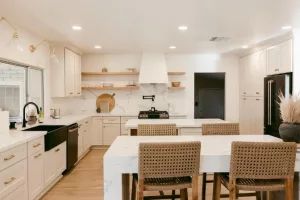How to List your House for Sale (2025)
Go Back To Previous PageSelling a house is like running a small business—it takes time, effort, and money. So far, you’ve had to make numerous repairs, including cleaning, painting, depersonalizing, and staging, to prepare it for the market. Good job. But one last step to selling your home before you can relax is listing it. If selling your house is like running a small business, your house is the product. Like any other business, marketing is key to attracting cash home buyers. You hired an agent to handle this process, but they cannot do it alone. You must partner to brainstorm marketing ideas and add personality to the marketing process. In this post, we will explain how to list and sell your property.
Below, we highlight several listing and marketing considerations and provide guidance on how to execute them effectively. 
Pricing
Pricing is a difficult proposition for most homeowners. Most homeowners often overprice their homes only to have them collect dust on the market. Agents usually compare your home to similar houses in your market to determine the price. Unfortunately, such a comparison rarely gives the actual value of a home.
You should ask your agent to conduct a free market analysis to get close to the actual number. In the analysis, they should create a price aligned with the value of your home in its neighborhood. The market analysis is free since it’s a way of getting you to list the house with them. Once it sells, they’ll receive payment for their time.
Creating the Actual Listing
Once you get the price right, it’s time to craft the listing description. And since you won’t have the chance to explain the perks of your home to every potential buyer, craft the description in a way that does this for you.
A good listing often includes a description and pictures of the inside and outside of your home. But creating the perfect listing is easier said than done. Below are some tips to guide you along.
Crafting a Creative Listing Description
You only have one shot to make a lasting impression and connect with a buyer—make it count.
-
Mention the house highlights and be specific.
Many agents make the mistake of using statistical data when writing listing descriptions. However, data such as the number of bathrooms, bedrooms, and size of the home are already in the data fields and need no repeating.
data fields and need no repeating.
Instead, focus on the home’s best features that a buyer might not pick up from the photos. Details like mahogany wood flooring, new kitchen countertops, and matching new bathroom fixtures will do the trick. Also, if you spend money getting luxury brand appliances, don’t be afraid to flaunt them.
You must be even more creative if your home lacks expensive, new, or standout features.
-
Pick your adjectives and buzzwords wisely.
Homeowners and agents often avoid using creative descriptions for fear of misleading and disappointing potential buyers during a showing. However, regardless of how ordinary your home is, there are always words you can use to spike interest without overselling.
Remember, the purpose of a listing description is to paint a vivid picture for potential buyers. So, use adjectives in your description that do this and stir a buyer’s emotions. For example, adjectives like clean lines, swanky kitchen, and crisp black cabinets will make a buyer want to see the home.
The challenge is coming up with accurate adjectives for your home. Here are some tips for choosing the right ones.
- Discuss with your agent the personality and vibe of your home. Consider their word choice and how they feel about the house in this conversation. Since they have experience writing descriptions, they should develop a good list.
- Go online for inspiration.
- Review some great listing descriptions on the market. Different markets have their buzzwords. Please take note of these words and sprinkle them in your listing.
-
Match photos to the words used.
You’ve got to ground the adjectives you use with reality. It helps if your description follows the flow of your home. This way, you can add photos following the same flow. This paints a clear picture of what buyers should expect.
Additionally, tagging photos with phrases from your description helps buyers identify the key highlights to look for in each room.
Even as we advocate for creativity in your listing, you should strike a balance between overselling and showcasing in the description. Be honest while using attractive words to describe your home’s personality.
For instance, if the backyard has an in-ground pool, a fire pit, and a flagstone patio, you can describe it as ‘resort-like.’ However, if all it has is grass, then be upfront about it. Something like a ‘spacious, lush green lawn’ will do.
- Make sure the description is lawful.
Yes, there are legal restrictions on descriptions. You have to be extra careful not to use words that violate the Fair Housing Act. Violating it once earns you a warning, but repeatedly doing so earns you a fine. According to the Fair Housing Act, you cannot use discriminatory language against gender, disability, national origin, color, race, or family status.
Some illegal words and phrases include:
- Perfect for families
- Family-oriented
- Exclusive
- Restricted
Conclusion
The description you provide can entice or deter potential buyers. Crafting a good one isn’t easy, but with some creativity and help from your agent, you can nail it.


